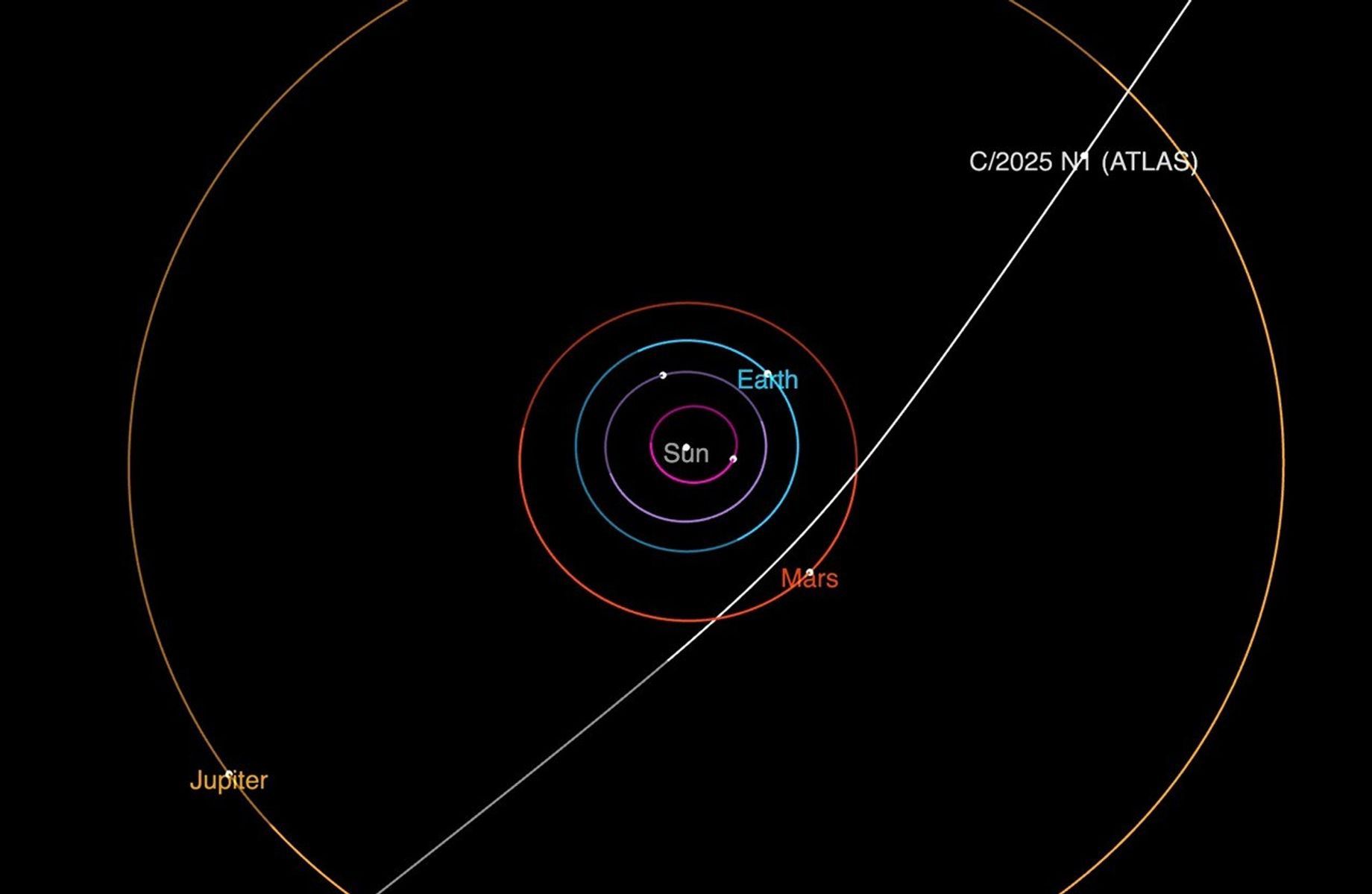New Interstellar Comet Incoming!
We are being visited by a comet from another solar system. Here’s why it’s historic and what to expect.

Everything in the solar system goes around the Sun. That includes planets, asteroids, dwarf planets, and comets. But astronomers have discovered three (and only three) objects wandering through the solar system that came from somewhere else, somewhere interstellar. The latest find is named 3I ATLAS and appears to be the nucleus of a comet that came from a distant star — from a different solar system. This interstellar visitor has astronomers and the public buzzing. What’s going on with this thing? Let’s dive into the biggest questions about 3I ATLAS.
New Interstellar Comet FAQ
When was it discovered?
The team working NASA’s ATLAS (Asteroid Terrestrial-Impact Alert System) telescope in Chile, first reported 3I ATLAS on July 1, 2025.
Why is it called 3I ATLAS?
“3” represents it as the third interstellar object ever discovered. “I” stands for the interstellar object category. And ATLAS comes from the name of the discovering telescope: Asteroid Terrestrial-impact Last Alert System.
How do astronomers know it came from outside of the solar system?
Comets in our solar system mainly have an orbit that looks like an oval shape. They go around the Sun over and over again. The path 3I ATLAS takes is an open curve – it not only will pass the Sun and keep going, eventually leaving our solar system, but the direction and speed from which it came told the astronomers that it came from interstellar space.

Do astronomers know which star it came from?
Unfortunately, not yet. The direction from which 3I ATLAS came from was near the disc of our Milky Way galaxy. That means there are too many stars in that area to know for certain which star it came from. Also, 3I ATLAS passed near several stars which could’ve changed its speed and trajectory. It is possible that this comet has been wandering the galaxy for a very, very long time and only stumbled past our solar system this year.
So 3I ATLAS is old?
Very old. In fact, if 3I ATLAS is, as some astronomers believe, more than 7.6 billion years old, it is older than anything in our solar system (which is only about 4.6 billion years old) and may be the oldest comet ever observed.
How big is 3I ATLAS?
It’s extremely difficult to get an exact measurement of 3I ATLAS because gases erupting from its surface enshroud the solid, icy core of the comet. Initial estimates ranged from 10-13 miles across (which would be a very large solar system comet), but new, more accurate measurements have reined that in.
3I ATLAS could be anywhere between 320 meters (1000 feet) to 5.6 kilometers (3.5 miles) wide. More observations should narrow this down.

How close to the Sun and Earth will it get (and when)?
The comet will swing around the Sun in late October and will come only as close as 269 million kilometers (167 million miles) from Earth on December 19, 2025. After that 3I ATLAS will keep on flying out of the solar system and on to its next stop.
Will 3I ATLAS become visible to the naked eye?
Unfortunately, not. In December when 3I ATLAS is closer to Earth it may shine at magnitude 12 — meaning it will be so faint you will need a professional or a very large home telescope to spot it.
Any questions? Contact [email protected]
What were the other two interstellar objects found so far?
Astronomers discovered the first interstellar object, named 1I ‘Oumuamua, in 2017. It is smaller than 3I ATLAS and its composition was mainly rocky – therefore it was probably not an icy comet. The second was 2I Borisov, found in 2019. This object was icy and even developed a small tail. Astronomers gave 2I Borisov the nickname of a “Rogue Comet” since it came from outside the Sun’s reach.
Are we sure 3I ATLAS is a comet, and not an asteroid, or an alien craft?
The Minor Planet Center’s Electronic Circular from Wednesday, July 2, 2025 confirmed 3I ATLAS as a comet.
Most likely 3I ATLAS is in fact a comet. Astronomers have observed gases around the object that resemble comets in our solar system. So, it’s probably not a rocky object like an asteroid or planet and definitely not a metallic alien spaceship.
Join the Discussion
Are you excited about this interstellar comet?
Have you ever seen a comet before?
What is one of your favorite things about astronomy and space?
Let us know in the comments!







